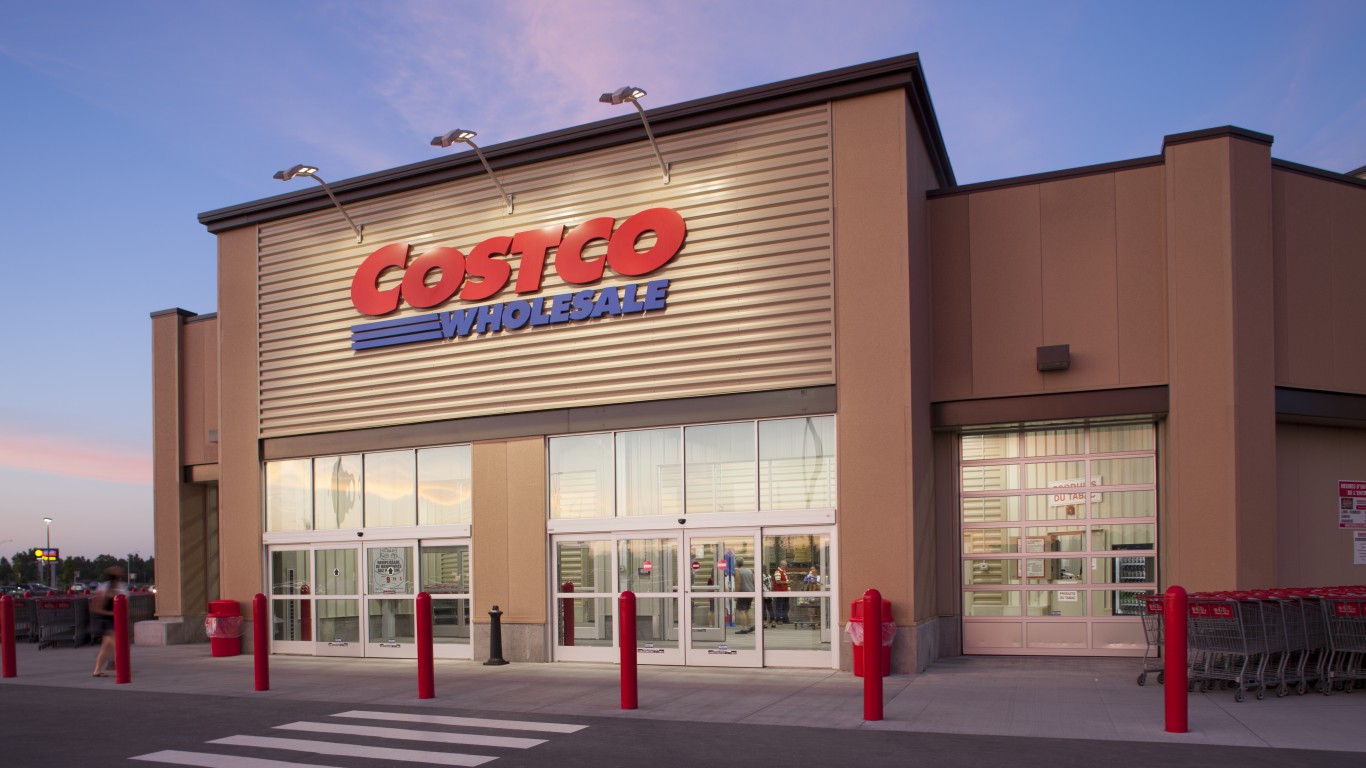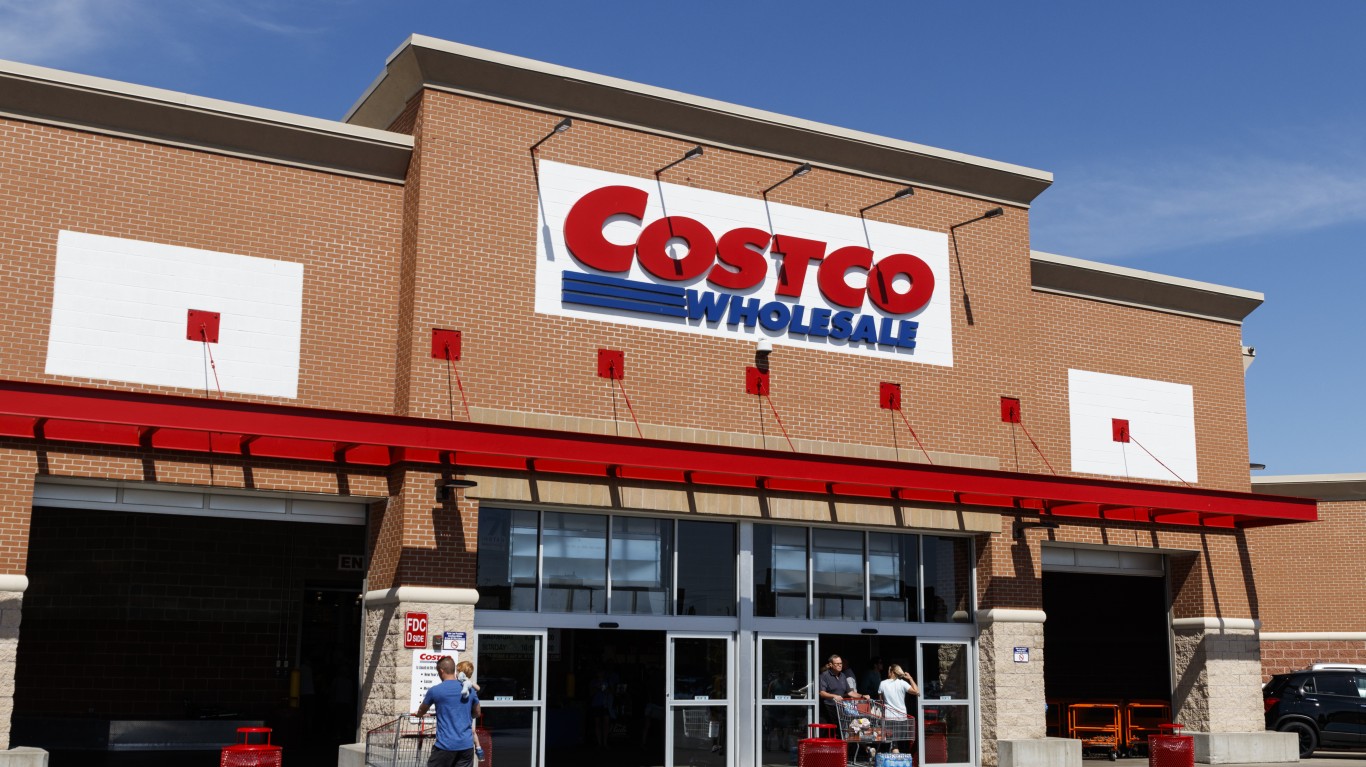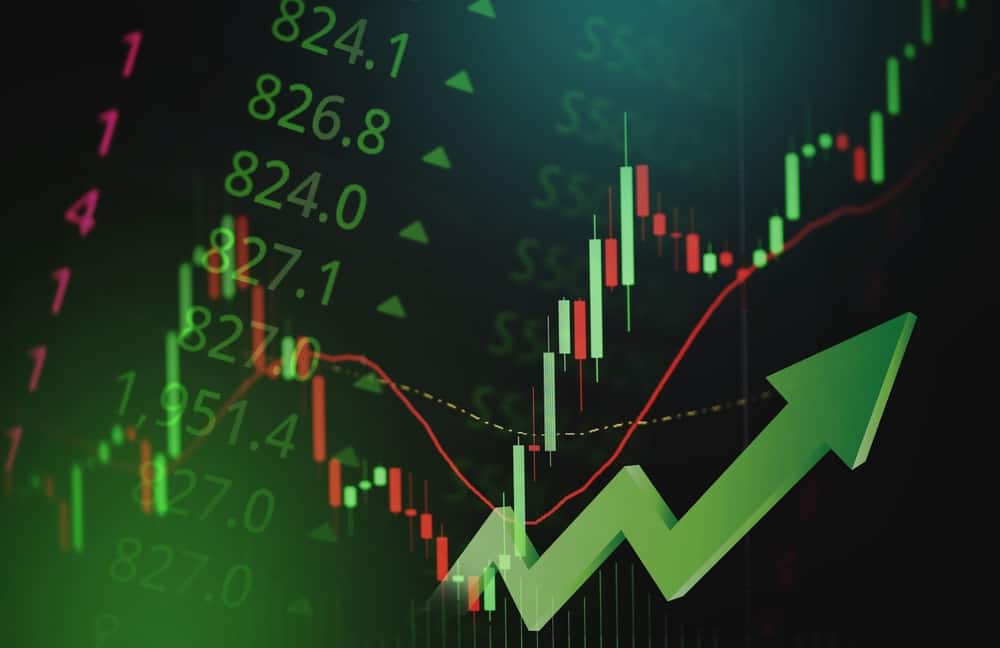Investing
Costco (COST) Stock Price Prediction in 2030: Bull, Base and Bear Forecasts

Published:

Costco’s journey through the retail landscape showcases a blend of innovative practices and tech-forward strategies, setting the stage for an enhanced operational framework and a richer customer engagement model. At the heart of its tech evolution lies the adoption of self-service kiosks, a dynamic mobile app, and artificial intelligence-driven inventory management tools. These elements work in concert to fine-tune stock levels in line with consumer demand patterns, thereby minimizing excess and optimizing the shopper’s journey. Such technological initiatives not only streamline the day-to-day operations but also pave the way for heightened sales and a loyal customer base eager for efficiency and convenience.
Costco Wholesale Corporation (NASDAQ: COST) has been one of the best-performing retail stocks ever. The company IPO’d in 1985 at a split-adjusted price of just $0.11 per share. Of course, in late 2023 it trades for over $700 per share, quite the difference from its early days.
Costco came into 2023 trading at a split-adjusted $508 per share, so its past decade has seen phenomenal growth as well. Yet, the key question is: What does the next decade look like for this warehouse giant? Let’s analyze bull, base and bear case scenarios for a potential 2030 stock price.

————————————————————
Key Metric Current Status
Revenue (TTM) $245.7 billion
Net Income (TTM) $6.5 billion
Memberships 64 million
Locations 830 warehouses
Stock Price $723
————————————————————


We estimate Costco’s stock price in 2030 could reasonably range from $1,900 per share in our bull case, to $1,050 in our base case, to $700 in the bear scenario.

Our bull case assumes continued rapid growth in memberships, e-commerce investments paying off big, and faster international rollout. Specifically:
– Memberships increase 8% annually, from 64 million now to 125 million by 2030
– Online sales quadruple, hitting $100 billion while margins expand
– International locations double to 1,000 warehouse stores
With Membership income doubling and overseas growth accelerating, our model shows Costco earning $30 billion in net income by 2030. Applying a premium 35x P/E ratio gives us a potential future stock price of $1,900.
The retailer’s balance sheet, marked by careful debt oversight, robust liquidity, and steady cash flow, stands as a testament to its savvy management practices. Such financial health equips Costco to weather economic storms and seize growth opportunities with agility. 24/7 Wall St believes Costco is a long-term winner due to its loyal membership base. Customers have shown for decades that they will keep coming back. Our bull case sees this steady loyalty continuing.
Costco’s strategic eye towards international markets opens up avenues ripe with potential yet fraught with complexities like regulatory landscapes and consumer predilections. The retailer’s knack for curating product assortments that resonate with local tastes—evidenced by its growing selection of organic and alternative food options—demonstrates an agile approach to global consumer trends. This flexibility is key to captivating new customer cohorts and fostering growth in a world of varied market dynamics.

Our base case aligns broadly with Wall Street analyst forecasts, which peg 11% average annual earnings growth this decade. We haircut that to 10% annual net income growth, resulting in $20 billion in profits by 2030. Applying a lower 30x multiple gives us a 2030 base case share price of $1,050.
This scenario assumes slower membership expansion and online sales growth more in line with historic trends. But the base view still sees strong profitability lifting Costco higher, even if not at the bull case’s torrid pace.

The bear case envisions Costco struggling to expand memberships, losing online grocery share to Amazon and big box players, and reductions in consumer discretionary spending hampering growth plans. challenges such as fierce market competition, economic shifts impacting consumer spending, and logistical hurdles remain on the horizon.
This bear scenario has net income growing just 5% annually, hitting $13 billion by 2030. With a lower 25x multiple, the bear case stock price is $700.
The bull and bear cases represent the extremes, but even the worst case sees considerable shareholder value creation continuing at Costco over the next decade. The company’s loyal membership base, expanding product selection, and disciplined management team should drive solid returns as Costco stocks both familiar warehouse aisles and investor portfolio aisles with value.
When juxtaposed with its industry counterparts, Costco’s distinctiveness becomes apparent. Its membership-driven model, coupled with an unwavering commitment to bulk savings and high-quality offerings, sets it apart from retail juggernauts such as Walmart and Amazon. This strategy has cultivated an enviable level of customer fidelity, distinguishing Costco in a crowded marketplace and fueling its continued revenue ascension.

The investor community’s outlook on Costco remains buoyant, anchored by faith in the retailer’s strategic vision and financial robustness. However, a discerning analysis of the alignment between market valuation and intrinsic company metrics is imperative. Despite Costco’s premium market positioning, reflective of its robust growth trajectory and business resilience, vigilance against overvaluation is advised. A thorough examination of Costco’s historical performance across diverse economic conditions offers a lens through which its steadfast appeal as a durable investment can be appreciated, even amidst fluctuating market sentiments. Traders and investors can train their eyes to see pivotal points where the stock’s sentiment can shift.
In the digital domain, Costco’s ventures into e-commerce and digital market expansion signal a strategic pivot poised to fuel future growth. Enhancements to its online platform aim to broaden its digital footprint, capturing a larger slice of the e-commerce pie. Moreover, leveraging blockchain for supply chain visibility signifies a commitment to efficiency and transparency, bolstering customer trust. These tech advancements not only underpin Costco’s growth in the digital era but also affirm its dedication to harnessing cutting-edge technology for operational excellence and consumer satisfaction. Want to read about Companies With the Best Reputations?
The average American spends $17,274 on debit cards a year, and it’s a HUGE mistake. First, debit cards don’t have the same fraud protections as credit cards. Once your money is gone, it’s gone. But more importantly you can actually get something back from this spending every time you swipe.
Issuers are handing out wild bonuses right now. With some you can earn up to 5% back on every purchase. That’s like getting a 5% discount on everything you buy!
Our top pick is kind of hard to imagine. Not only does it pay up to 5% back, it also includes a $200 cash back reward in the first six months, a 0% intro APR, and…. $0 annual fee. It’s quite literally free money for any one that uses a card regularly. Click here to learn more!
Flywheel Publishing has partnered with CardRatings to provide coverage of credit card products. Flywheel Publishing and CardRatings may receive a commission from card issuers.
Thank you for reading! Have some feedback for us?
Contact the 24/7 Wall St. editorial team.